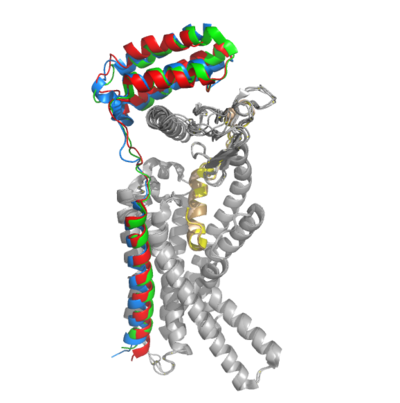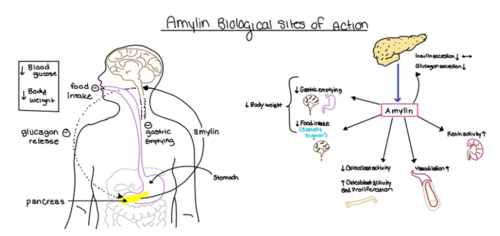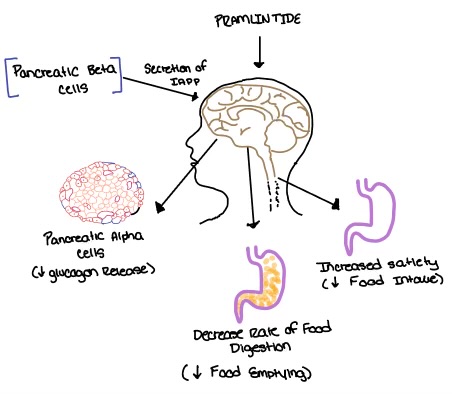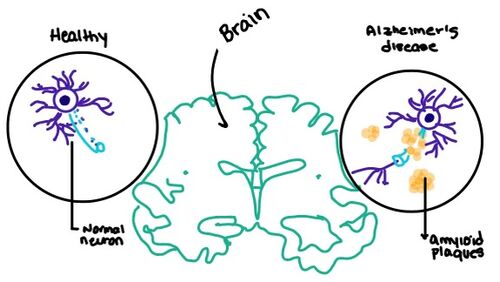User:Jaelin Lunato/Sandbox 1
From Proteopedia
(Difference between revisions)
| Line 17: | Line 17: | ||
=== Binding Site Residues === | === Binding Site Residues === | ||
| - | There are water molecules present in the binding site between amylin and the calcitonin receptor that support the ligand-receptor interaction. Some water molecules interact with the amylin ligand and create water-bridged Hydrogen bonds between different ligand residues, such as the <scene name='10/1037495/Water_1_ver3/4'>water-bridged Hydrogen bond between the main chains of T6 and T9</scene>. Other water molecules create <scene name='10/ | + | There are water molecules present in the binding site between amylin and the calcitonin receptor that support the ligand-receptor interaction. Some water molecules interact with the amylin ligand and create water-bridged Hydrogen bonds between different ligand residues, such as the <scene name='10/1037495/Water_1_ver3/4'>water-bridged Hydrogen bond between the main chains of T6 and T9</scene>. Other water molecules create <scene name='10/1037496/Water_receptor/1'>water-bridged Hydrogen bonds between residues of the calcitonin receptor</scene>. The water molecules are present in the empty space located in the ligand binding site, and they are hypothesized to stabilize the active conformation of the calcitonin receptor when amylin is bound. Substitutions of polar residues involved with the water-bridged Hydrogen bond network to nonpolar residues causes a decrease in potency and affinity of amylin to the calcitonin receptor. (REFERENCE NEEDED HERE******) |
| - | There are <scene name='10/ | + | There are <scene name='10/1037496/Amylin_2hbonds/4'>two conserved hydrogen bonds between the CTR and the amylin N-terminus loop</scene>. These bonds contribute to the functional phenotype of AMYR and also causes the end of the amylin ligand to be held in a flipped up position. |
=== G Protein Activation === | === G Protein Activation === | ||
| - | There are extensive nonpolar, <scene name='10/ | + | There are extensive nonpolar, <scene name='10/1037496/H2ophobic_interactions/2'>hydrophobic interactions between the G protein Gα subunit and the CTR 2nd intracellular loop</scene>. Here, Val322 and Leu323 of the CTR 2nd intracellular loop makes nonpolar interactions with Ile248 and Val249 back to itself as well as Leu388 of the Gα subunit. The <scene name='10/1037496/G_protein_interaction/2'>CTR 3rd intracellular loop interacts with the Gα subunit through Hydrogen bonding</scene>. The 3rd intracellular loop has Arg180 hydrogen bonding to the Gln384 of the Gα subunit. |
== Function == | == Function == | ||
Revision as of 13:29, 23 April 2024
Amylin Receptor (AMYR)
| |||||||||||







